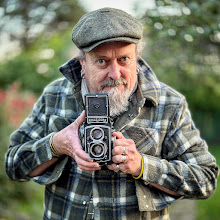I was just looking through last year's Warley Show photos and spotted a couple of shots that didn't make it into print due to lack of space. The subject to today's random post being that we don't always need to use that popular track system produced in a well known holiday resort - there are other options for those who'd like a break from the norm.
Getting to the point; above and below is just one of those from Tillig - the lack of moulded plastic bits to represent those bits on a real point that are made out of rail is one of the first things to catch my eye. The base is also slightly flexible which allows the point to be bent slightly to fit in with a flowing track layout - this until now has only been possible with hand laid track.
Then there is the tiebar - it's nice and slender and not too far removed from the real thing in looks - no crushed Dalek as seen on many ready-to-lay track systems to spoil the look sitting on top. The movement of switch rails simply rely on the rail flexing, no unsightly knuckle joints to fail electrically once painted. I suppose this is starting to read a little like an advert, but I'm not being paid - this just an observation of other options that don't take one down the hand-built route if that's not ones kind of beer.
Purists will of course say that the track is H0 and that the sleepers are too close together for OO, and that it conforms to European rather than British practice; but people who know me know that my view of toy chuffs chuffs is that it is the overall effect that counts, and above all if things are well done, a far more satisfying model railway will result over that one that maybe has the 'correct' 1963 vintage flangeway bolts surrounded by shoddy modelling.
From an historic scenario, flat bottomed rail to depict a British railway scene with highly distinctive bullhead rail and chairs is maybe too far removed in looks, but from just after the WW2, Britain's railways started to use flat-bottomed rail for the main running lines, so it is quite suitable for that popular transition era onwards which still interests the bulk of Britain's railway modellers. And of course there is nothing stopping one from using a length of C+L bullhead flexi track in the sidings where the sleepers are often hidden under a layer of clinker, thus hiding the sleeper size and spacing differences.
- C+L Track
- International Models - (supplier of Tillig, not a smutty site)




"a far more satisfying model railway will result over that one that maybe has the 'correct' 1963 vintage flangeway bolts surrounded by shoddy modelling"
ReplyDeleteA big "hear, hear" to that, Chris!